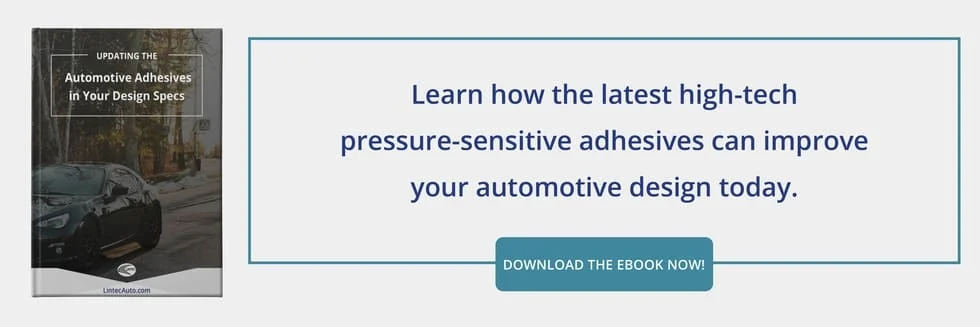Solving for Low Surface Energy with Auto Data Labels

Auto data labelslike VIN stickers, safety certification labels, warning labels, and tire pressure stickersneed to deal with a lot of threats. The engine bay, for example, puts intense demands on adhesives, tapes, and labels of any kind.
But in the last few decades, one challenge, in particular, has dominated the priority list: Low Surface Energy (LSE) plastics.
The Problem of Low Surface Energy Plastics
These versatile polymers have helped automakers cut weight, boost fuel efficiency, and provide attractive alternatives to metal parts. Theyre everywhere in vehicles now, including the extreme environment of the engine compartment.
Materials with high surface energy, like most metals, attract molecules from unlike materials (such as label adhesives). Low surface energy substrates, like most plastics, repel. The classic test to tell the difference is to pour water on the surface. If its High Surface Energy (HSE), the water will spread out and pool. In other words, the water is more attracted to the substrate than to itself. If it beads into droplets, the surface is LSEthe water is more attracted to itself than to the substrate.
Waxed and unwaxed car bodies show this difference very clearly (water beads on a waxed car). Youd also see this difference by pouring water on aluminum foil (itll pool; HSE) and then on a sheet of Teflon (itll bead; LSE).
The problem is that auto data labels still need to adhere to LSE substrates like plastic bumpers or protective covers in the engine. And they need to last. Plastic parts that are curved or textured make adhesion even more challenging. Traditional labelling adhesives just arent tacky enough to stick to these surfaces.
The LSE Labelling Solution
To solve for low surface energy, label manufacturers have developed tackified acrylic and other synthetic adhesives. These modified high-strength adhesives are softer and flow more easily on LSE surfaces (or curved, rough, and uneven ones), while still providing the chemical and temperature resistance needed in automotive labels.
Tacky adhesives are formulated to wet-out on high or low surface energy substrates alike. Good wet-out means maximum flow across the surface area and greater contact for a strong bond. Auto data labels equipped with these adhesives can handle typical HSE materials like:
- Steel
- Glass
- Aluminum
But theyre also ideal for the newer, LSE materials that have become prevalent in automobiles, like:
- Polyethylene
- Polypropylene
- PTFE Fluoropolymer (Teflon)
- Acrylic
- PVC
- Powder-coated metals
- Rough or textured surfaces
In fact, a lightly abraded surface can even make for a stronger mechanical bond. The small fissures in a rough substrate give it more available surface area for bonding, but the adhesive must be tacky enough to flow into it. Otherwise, it will only be able to contact the raised areas of the surface. Low surface energy adhesives can take advantage of their greater wet-out to increase (rather than reduce) the total bonded surface area on a rough surface.
Auto Data Labels and Out-Gassing
In addition to their other labeling issues, many low surface energy thermoplastics will out-gas over time. This creates bubbles and blisters in these critical automotive labels. Suppliers of auto data labels have worked hard to design specialized adhesive carriers from cellular polymers that allow air to pass through without creating visible holes in the surface.
If you need an auto data label that can perform equally well on HSE and LSE surfaces, rough substrates, or injection-molded plastics that out-gas, consult with a supplier on the best option for your project. Some LSE automotive adhesives will have better shear strength, while others will be optimal for chemical or environmental hazards. Youll want to understand the pros and cons of each adhesive option upfront.

